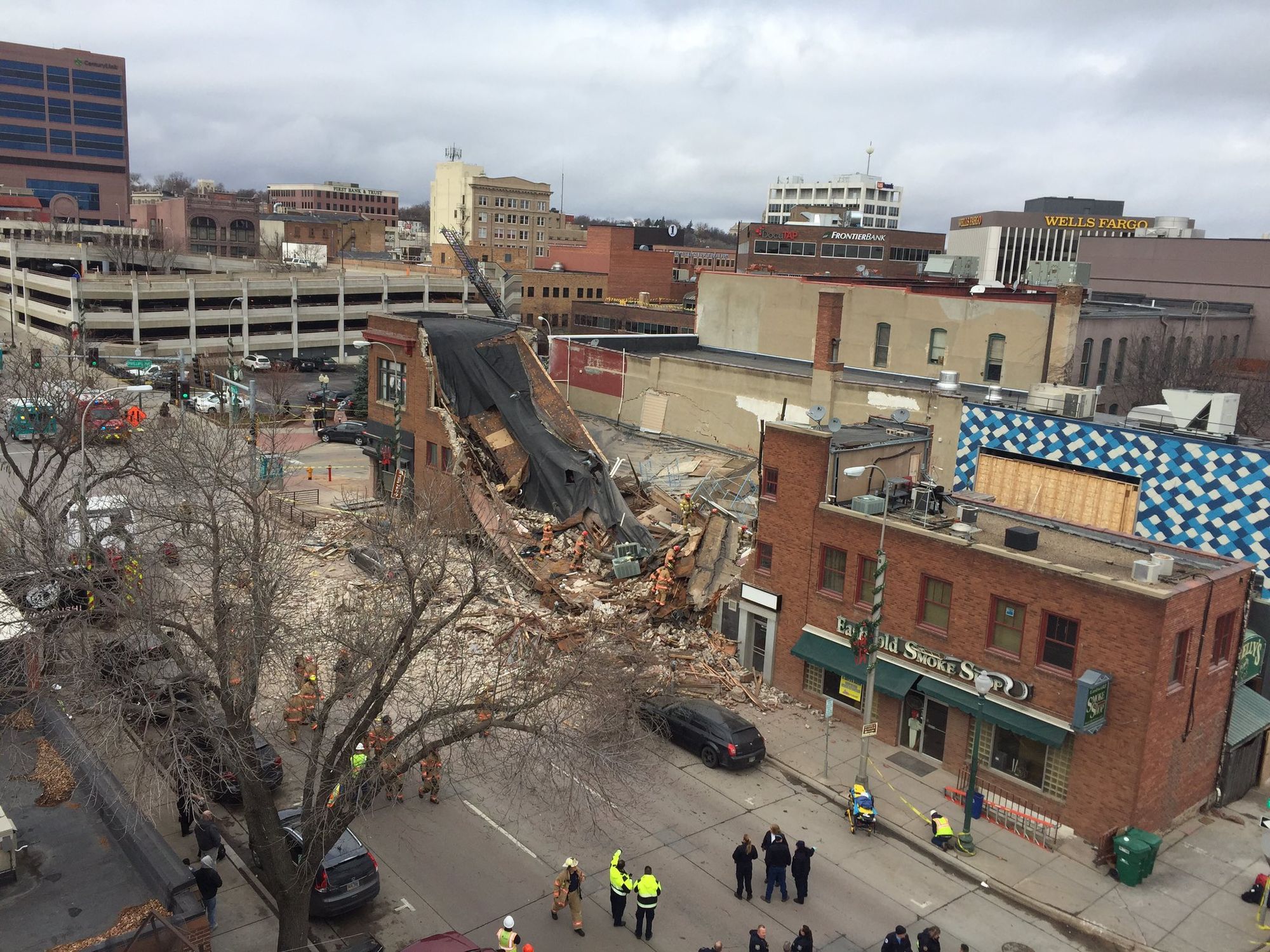Simplified: A building collapse on Dec. 2, 2016 left a man dead and a woman injured after being trapped for hours. In the aftermath, the collapse also slowed traffic to downtown businesses. Here's a look at what's changed in the last five years and how the downtown community has remained not only resilient, but growing.
Why it matters
- First, let's acknowledge the life lost. Ethan McMahon was working on major renovations to the former Copper Lounge building, when a load-bearing wall was removed without proper support. OSHA later fined the companies responsible, and related lawsuits ended in a multi-million dollar settlement.
- In the years since, downtown has grown to 3,000 residents, added new businesses, lost others, but through it all has developed a strong sense of community, according to Joe Batcheller, president of DTSF, Inc.
- It's also worth remembering, too, that downtown businesses were among the first who stepped up to help, providing coffee, food and places to warm up for the many first responders and family members affected by the collapse.
"I think those examples ... inspired the community to step up and support those small businesses," Batcheller said. "It sort of hammered home the importance of why we need to support small businesses."
What lessons did the city learn from the collapse?
The city wasn't found to be at fault for the collapse, despite a lawsuit from the family of the woman trapped in rubble for hours. The suit, which alleged the city's negligence in granting the building permit, was dismissed, and that dismissal was upheld by the South Dakota Supreme Court, according to the Associated Press.
There were takeaways, though, said Mayor Paul TenHaken.
- For one, the city learned the importance of having police, fire rescue and other first responders trained for even seemingly impossible scenarios.
- Another lesson, TenHaken added, was the importance of recognizing that renovation and restoration of historical buildings takes a "very special skill."
"I think there's a much higher level of caution that the building owner has in determining who they're going to work with and what sort of work is going to be done," TenHaken said.
How has downtown changed in the last five years?
There are the tangible changes, like the new Lewis Drug and rooftop patio for Pave that sit in the former Copper Lounge site.
- Downtown has also seen several new developments from Levitt at the Falls to the Cascade building to Washington Square.
- And, the public art scene has grown with the Arc of Dreams, local murals and the ArtBox project.
But there are also more intangible changes, Batcheller said.
- As more people live downtown, there's a more prominent community vibe, with activity from early morning to midnight rather than just 8 a.m. to 5 p.m.
- There are also more people coming downtown to – as DTSF, Inc. always says – live, work and play.
It's also impossible to ignore the impacts of the pandemic on small businesses downtown over the last nearly two years.
- But even through the uncertainty and challenges there, Batcheller said he sees a community push to support small businesses.
"With small business owners, I think you’re dealing with some of the most resilient and resourceful types of people that you’ll find," he said.
What happens next?
More growth.
There are hundreds of millions of dollars worth of development planned for the downtown area in the coming years, from the Steel District to the Cherapa Place expansion and more.
"The momentum for downtown is probably the highest I've ever seen it, not only during my time as mayor," TenHaken said, "but probably for my time in Sioux Falls over the last 25 years."


